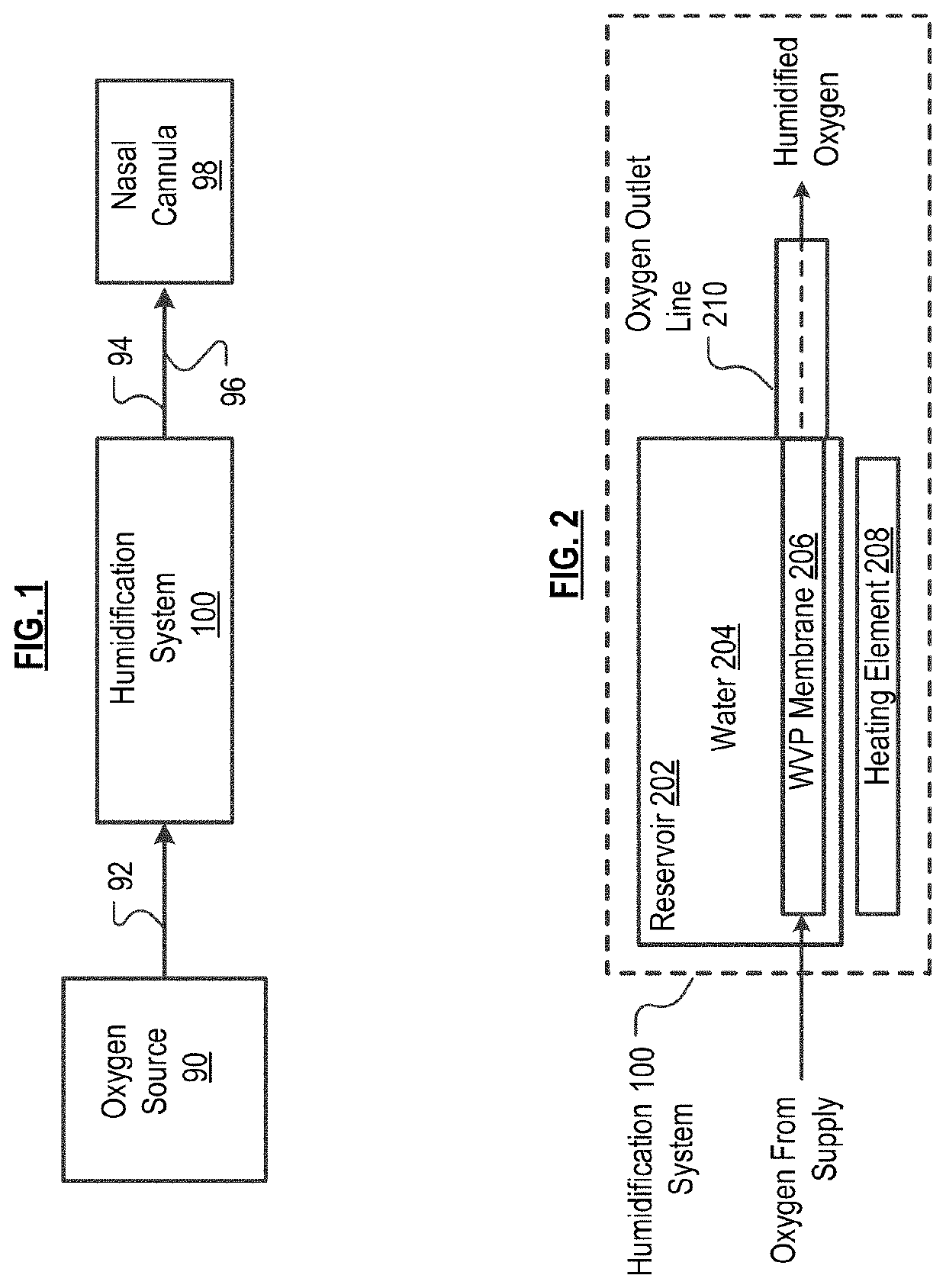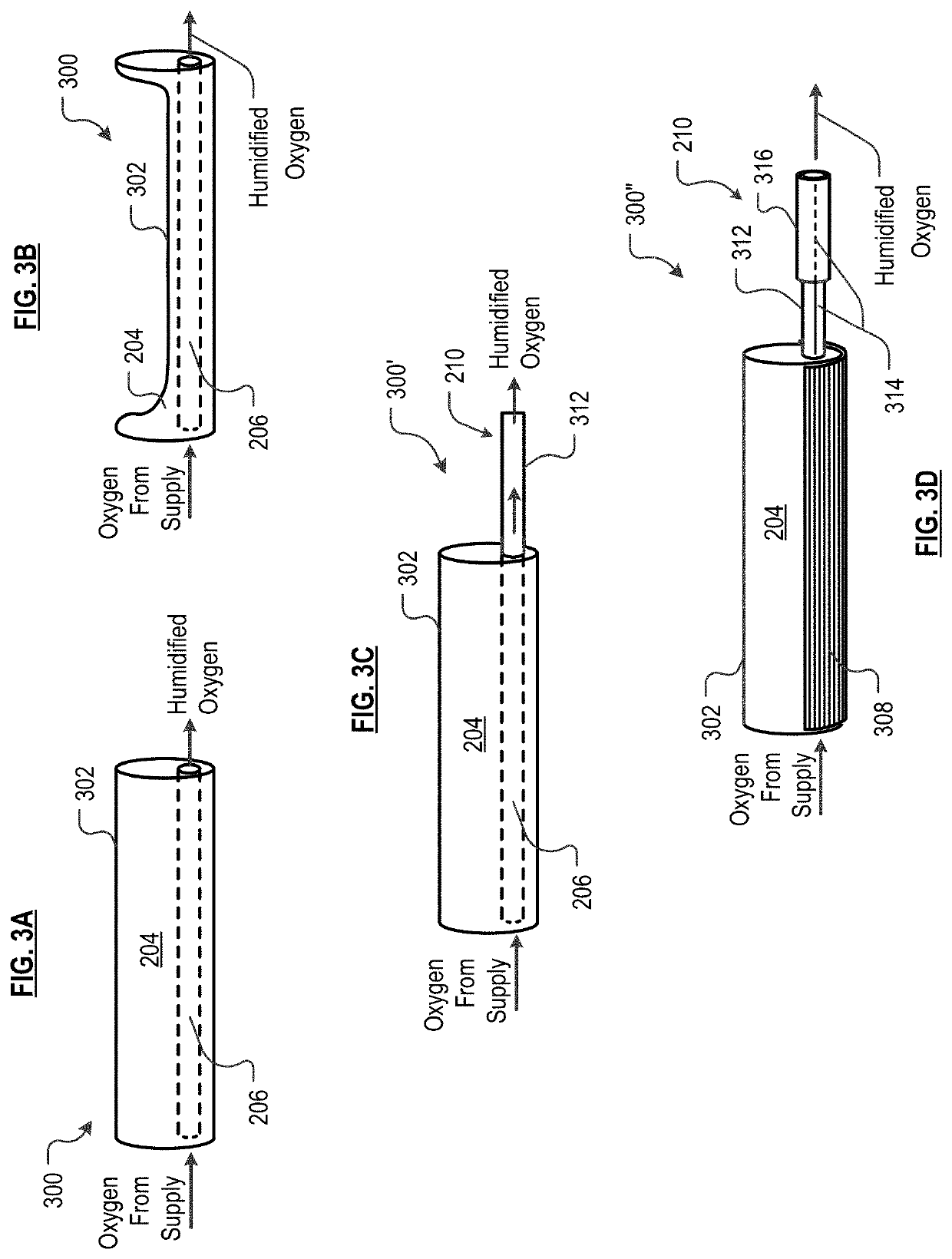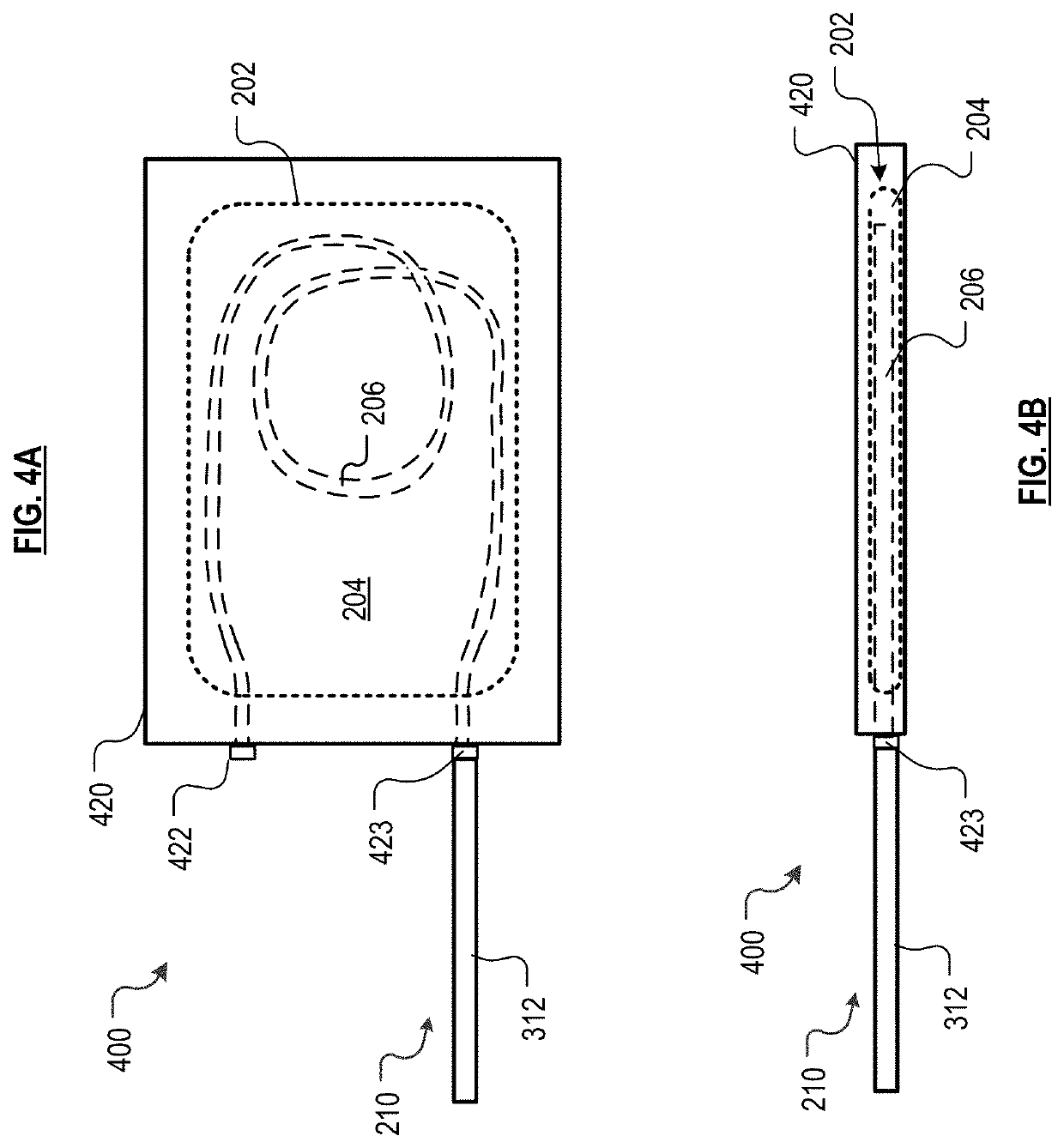Low-flow oxygen therapy humidifier and method
- Summary
- Abstract
- Description
- Claims
- Application Information
AI Technical Summary
Benefits of technology
Problems solved by technology
Method used
Image
Examples
Embodiment Construction
[0060]FIG. 1 depicts humidification system 100 in accordance with the present teachings, in use, receiving cool dry oxygen 92 from oxygen source 90 and delivering humidified oxygen 94, or heated, humidified oxygen 96, to nasal cannula 98. In the illustrative embodiment, humidification system 100 provides sufficient humidification (as discussed below) for oxygen flow rates in the range of about 0.5 to about 6.0 liters per minute (lpm). Oxygen source 90 may be a canister of oxygen or an oxygen concentrator. Neither the oxygen source 90 nor nasal cannula 98 are part of the present invention.
[0061]In some embodiments, based on the manner in which humidification system 100 operates, the dew point of the humidified oxygen is the temperature of the water used for humidification. In some embodiments of humidification system 100, the water used for humidifying the oxygen is heated, typically to a temperature in the range of about 28 to about 37° C. As a consequence, in such embodiments, humi...
PUM
 Login to View More
Login to View More Abstract
Description
Claims
Application Information
 Login to View More
Login to View More - Generate Ideas
- Intellectual Property
- Life Sciences
- Materials
- Tech Scout
- Unparalleled Data Quality
- Higher Quality Content
- 60% Fewer Hallucinations
Browse by: Latest US Patents, China's latest patents, Technical Efficacy Thesaurus, Application Domain, Technology Topic, Popular Technical Reports.
© 2025 PatSnap. All rights reserved.Legal|Privacy policy|Modern Slavery Act Transparency Statement|Sitemap|About US| Contact US: help@patsnap.com



